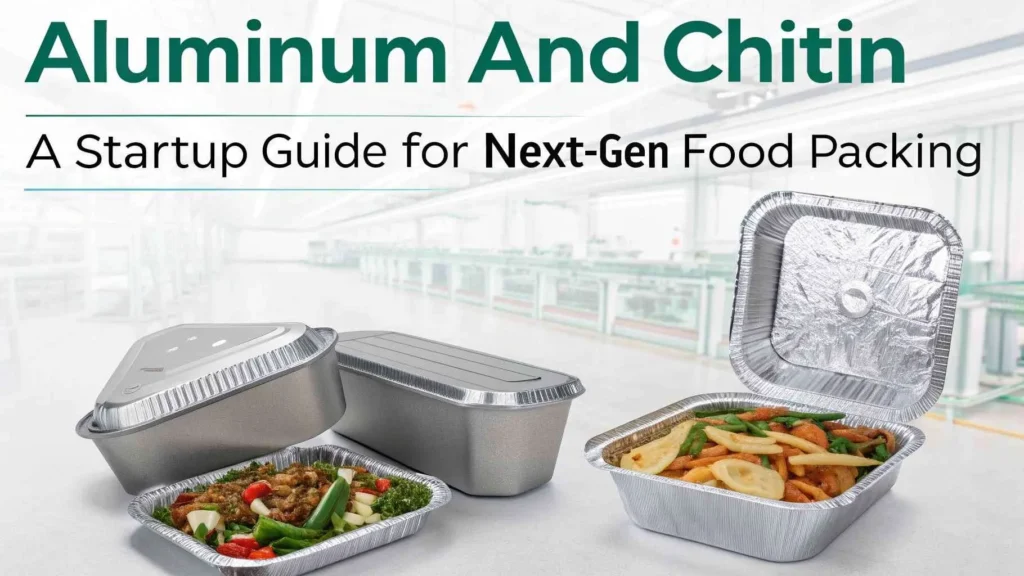Starting a welding electrode manufacturing plant can be a highly profitable venture, given the rapid industrialization and the ever-growing demand for welding applications in construction, automotive, infrastructure, and other sectors. Welding electrodes, which are consumable materials used in various welding processes, are essential in joining metal parts. With the increasing need for infrastructure development in countries like India, the demand for welding electrodes has significantly risen. Hence, entrepreneurs looking for a sustainable and scalable industrial business idea should consider entering this field. This article will guide you through every critical aspect of setting up a successful welding electrode manufacturing plant.
Understanding the Welding Electrode Manufacturing Industry
The welding electrode manufacturing industry is an integral part of the broader welding consumables market. Welding electrodes come in different types, including bare electrodes, coated electrodes, and specialty electrodes designed for specific metal types and welding positions. Coated electrodes are the most commonly used due to their ability to provide protection against contamination and to improve weld quality.
India’s market for welding consumables is expanding at a steady pace, driven by growth in sectors like oil & gas, shipbuilding, power, and railways. The government’s initiatives like “Make in India” and major investments in the manufacturing sector are further pushing this demand upward. Hence, setting up a welding electrode manufacturing plant not only caters to domestic consumption but also presents export opportunities, especially in countries with similar development needs.
Steps to Set Up a Welding Electrode Manufacturing Plant
To successfully launch a welding electrode manufacturing unit, you need a detailed understanding of the production process, legal requirements, market demand, and financial investment. Here’s a step-by-step breakdown:
1. Market Research and Feasibility Analysis
Before making any investments, conduct thorough market research. Identify your target market: is it domestic, export-based, or both? Understand the demand for different types of electrodes – mild steel electrodes, stainless steel electrodes, hard-facing electrodes, etc. You should also analyze your competitors, their product range, pricing strategies, and market reach.
Feasibility studies will help determine the ideal plant size, production capacity, and estimated return on investment (ROI). Consult with industry experts, analyze trends, and use data to forecast profitability.
2. Location and Infrastructure
The location of your welding electrode manufacturing plant is crucial. Ideally, the unit should be close to industrial hubs or transportation facilities (highways, railways, ports) for easy procurement of raw materials and distribution of finished goods. Availability of electricity, water, skilled labor, and space for expansion are also critical factors.
A typical small-to-medium manufacturing plant may require 5,000 to 15,000 sq. ft. of built-up area, which includes spaces for raw material storage, production, drying, packing, and office administration.
3. Legal and Regulatory Requirements
Register your business as an MSME (Micro, Small & Medium Enterprises) under the Ministry of MSME. Obtain GST registration, factory license, NOC from the pollution control board, and fire safety clearance. Also, apply for the Bureau of Indian Standards (BIS) certification since many welding electrodes must meet IS specifications (like IS 814 for covered electrodes).
Additionally, comply with labor laws and environmental regulations. For export, you’ll need Import-Export Code (IEC) registration and possibly international certifications like ISO 9001.
4. Raw Materials and Supply Chain
The primary raw materials required for welding electrode manufacturing are:
-
Mild steel wire rods (core wire)
-
Rutile
-
Ferro alloys (manganese, silicon, titanium, etc.)
-
Binding agents (sodium silicate)
-
Potassium and sodium salts
-
Iron powder
-
Cellulose (for some types)
Source these materials from trusted vendors to ensure consistent product quality. You can either import high-purity materials or buy from domestic suppliers, depending on your quality standards and pricing strategy.
5. Machinery and Equipment
The following machinery is typically required to set up a welding electrode manufacturing plant:
-
Wire straightening and cutting machine
-
Dry mixer and wet mixer
-
Extruder machine
-
Wire feeder unit
-
Electrode coating press
-
Conveyor belt system
-
Baking oven (400-500°C)
-
Inspection and testing equipment
-
Packing machine
The machinery setup cost varies depending on production capacity. For example, a plant producing 1 ton/day might cost between ?25 lakhs to ?50 lakhs (USD 30,000–60,000), while larger setups require higher investments.
6. Manufacturing Process
The welding electrode manufacturing process consists of several stages:
-
Wire Preparation: Wire rods are straightened and cut to the desired length.
-
Flux Preparation: The coating mixture is prepared by mixing minerals, binders, and alloying elements.
-
Coating: The cut wires are fed into a coating machine where flux material is extruded onto the core wire.
-
Drying and Baking: Coated electrodes are dried and then baked in a high-temperature oven to remove moisture and strengthen the coating.
-
Finishing: After baking, electrodes are inspected, tested for quality, and packed in moisture-resistant boxes.
7. Manpower and Staffing
A medium-scale unit typically requires a team of 15–30 people including:
-
Skilled machine operators
-
Quality control personnel
-
Electrical/mechanical maintenance staff
-
Administrative and sales personnel
Ensure that staff is trained on safety protocols and equipment handling since the manufacturing process involves exposure to high heat, dust, and chemicals.
8. Quality Control and Testing
To ensure the performance and safety of welding electrodes, rigorous testing is mandatory. Key quality control tests include:
-
Tensile strength
-
Impact resistance
-
Chemical composition of the weld
-
Slag detachability
-
Arc stability
Use testing equipment like tensile testers, X-ray machines (for weld analysis), and hardness testers to validate the electrodes’ properties. Ensure that all batches comply with Indian or international welding standards.
9. Marketing and Sales Strategy
Develop a multi-channel marketing strategy to sell your welding electrode manufacturing products. Options include:
-
Direct sales to industries and welding contractors
-
Channel partners and dealers
-
Online industrial marketplaces (like IndiaMART, TradeIndia)
-
Export to countries in Africa, South Asia, or the Middle East
Offer sample batches to large buyers for trial, and emphasize on the quality, strength, and reliability of your electrodes. Trade exhibitions and industry expos are also great platforms to showcase your products.
10. Financial Considerations and Profitability
Initial investment can vary between ?40 lakhs to ?1.5 crores depending on your production capacity, land cost, and automation level. Here’s a rough cost breakdown:
-
Land and Building: ?10–30 lakhs
-
Machinery and Setup: ?25–50 lakhs
-
Raw Materials (Initial Stock): ?5–15 lakhs
-
Licenses, Certifications: ?2–5 lakhs
-
Working Capital: ?10–20 lakhs
A plant with 1-ton/day capacity can expect to break even within 18–24 months, depending on market penetration and operational efficiency. Profit margins range from 10% to 25% based on scale and cost control.
Conclusion
Setting up a welding electrode manufacturing plant is a strategic industrial investment for entrepreneurs looking to tap into the growing demand for welding solutions. The industry holds immense potential for both domestic consumption and export, especially with government support for manufacturing initiatives. From location selection to machinery purchase, and from regulatory compliance to quality assurance, each step plays a crucial role in your plant’s success. With the right planning, quality focus, and marketing efforts, your welding electrode manufacturing unit can become a thriving and sustainable business venture.
Visit the page Select and Choose the Right Business Startup for You for sorting out the questions arising in your mind before starting any business and know which start-up you can plan.
We, at NPCS, endeavor to make business selection a simple and convenient step for any entrepreneur/startup. Our expert team, by capitalizing on its dexterity and decade’s long experience in the field, has created a list of profitable ventures for entrepreneurs who wish to diversify or venture. The list so mentioned is updated regularly to give you a regular dose of new emerging opportunities.
Contact Us
More Posts

Top 3 Profitable Manufacturing Opportunities in 2026: Ferrosilicon, Vedic Paint & Bamboo Wood Pellets
Profitable Manufacturing Opportunities in 2026 The global shift toward sustainable materials, renewable energy, and eco-conscious manufacturing is unlocking new business opportunities for entrepreneurs. With industries
From Milk to Millions: Dairy Startups in India — Opportunities & Roadmap
Dairy Startups in India: From White Revolution to Global Expansion India is more than just the world’s largest milk producer. It is also a superpower. India produces

From Farm to Functional food startups: India’s $25B Ingredient Revolution
The Dawn of a Functional Food Startups Revolution India’s Functional food startups sector is undergoing a transformation. The country’s food industry is undergoing a transformation. It

Aluminum and Chitin: The Ultimate Startup Guide for Next-Gen Sustainable Food Packaging
Food safety and sustainability are no longer optional; instead, they are the two key engines driving innovation in the global packaging sector. In particular, India’s
Send Us A Message
Send Us A Message
Categories
- World wide Business Opportunities
- Wood Based Products
- Wood and Wood Products
- Wire & Cable Projects
- Wax And Polish Industry
- Water Industry (Distilled Water)
- Waste Management and Recycling
- Vermiculture and Vermicompost Industry
- Uncategorized
- Tobacco And Pan Masala
- Textile Industry
- Surgical
- Stationery Products
- Startup Consulting Services
- Sport
- Spices
- Soaps and Detergents
- Small
- Services Sector
- Sanitary Napkins And Pad
- Rubber Projects
- Rice Husk Based
- Rice and Rice Based Products
- Resins Industry
- Renewable Energy
- Refinery Project
- Readymade Garment Industry
- Ready to Eat Food Item's
- Projects
- Project Report
- Potato And Potato Based Products
- Plastic Projects
- Plastic Industry
- Pipes And Tubes Based Projects
- Pharmaceutical industry
- Petroleum Based Products
- Pesticides
- Paper Industry
- Paint Industry
- Packaging And Printing Industry
- Oils and Fats
- Monthly Magazine
- Minerals & Mineral Processing Industry
- Mineral water
- Milling Industry
- Milk & Dairy Products
- Men's Shaving Industry
- Medical Plastics
- Medical Disposables
- Marble
- Maize
- Livestock Farming
- Leather Goods
- Jute And Jute Based Project
- Iron And Steel Projects
- Investment Opportunities
- information
- Industrial Gases Projects
- Hotel and Hospitality Projects
- Herbs And Herbal Based Products
- Health Care Sector
- Gypsum and Gypsum-Based Products
- Gums and Binders
- Government Projects
- Glass Based Projects
- Ginger And Garlic Products
- Fuels
- Fruits and Vegetables
- Food Processing And Agriculture Projects
- Fisheries and Aquaculture
- Fertilizers – Inorganic And Organic
- Ferrous and Non – Ferrous
- ferroalloys
- farming
- Ethanol And Alcohol Industry
- Essential Oil And Oleoresins
- Entrepreneur India monthly magazine
- Engineering Goods Projects
- Electroplating And Metal Projects
- Electronic Project
- Education Sector
- Eco Friendly Products
- E- Vehicle Projects
- Disposable Products
- Disposable Medical Products
- Disinfectants
- directory database
- Cow Based Products
- Cosmetic And Beauty Products
- Copper Products
- Construction & Building Materials Projects
- Concrete & Cement Industry
- Cold Storage
- Cold Chain
- Coconut Products
- Cloud Kitchen
- Chemical Industry
- Chemical
- Cereal Food Processing
- Cashew Value Added Products And Projects
- Carbon Fibers
- Business Plan
- Business Opportunity In Middle East Countries
- Business Opportunities In Asia
- Business Opportunities In Africa
- Books Banner
- Books
- Biotechnology and Biotech Sector
- Biodegradable Products
- Best Business Opportunities in India
- Battery Projects
- Banana Products
- Bamboo And Bamboo Products
- Bakery and Confectionery
- Automobile Industry
- Aluminium Products Project
- Alcoholic and Non-Alcoholic Beverages
- Agrochemicals
- Agro Based Products
- Agriculture Industry
- Agriculture Farming
- Adhesives and Sealants
- Activated Charcoal
- Activated Carbon
- Abrasive, Asbestos, Cement, Refractory Products
Welcome to NPCS, your premier industrial consultancy partner. Discover our tailored solutions and global expertise for entrepreneurial success.
Subscribe Now
Don’t miss our future updates! Get Subscribed Today!
©2024. NPCS Blog. All Rights Reserved.

